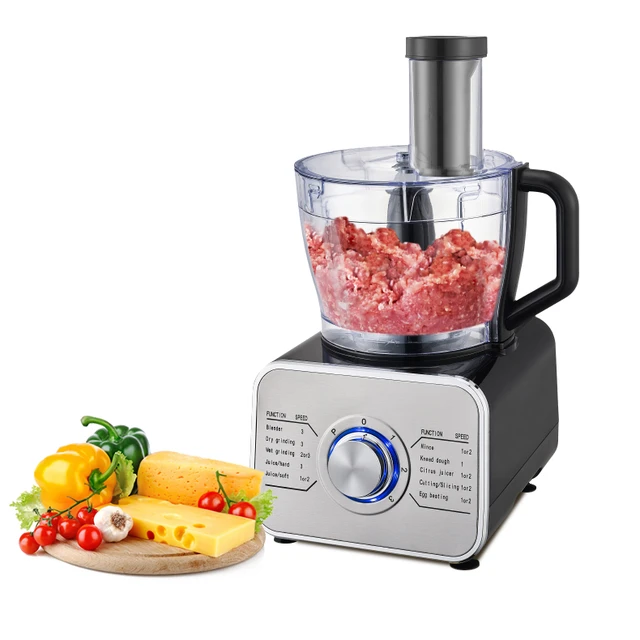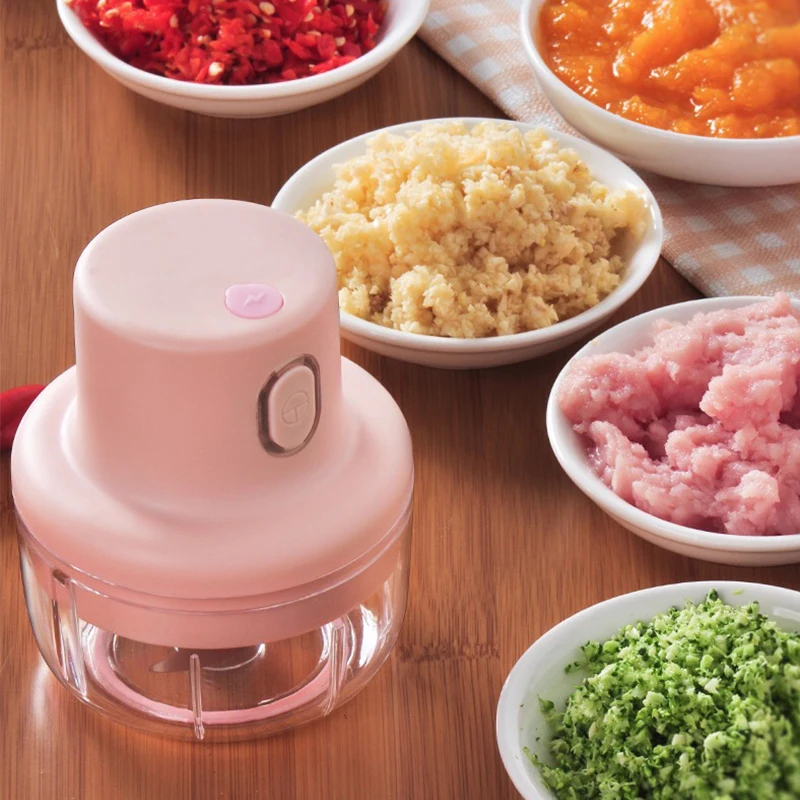
In the realm of culinary preparation, efficiency often reigns supreme. One kitchen appliance that stands out as a cornerstone in achieving this efficiency is the food processor. A versatile tool, the food processor serves numerous functions that streamline cooking, baking, and meal preparation. In this article, we will explore the various uses of a food processor in the kitchen, delving into its capabilities, benefits, and why it has become an indispensable part of many home chefs’ arsenals.
The Basic Functions of a Food Processor
Chopping and Slicing
When thinking about what a food processor is used for in the kitchen, one of its primary functions is chopping and slicing. Unlike manual chopping, where consistency can be a challenge, food processors provide uniformity. This is especially useful when preparing ingredients like onions, garlic, vegetables, and herbs.
- Uniformity: The blades of a food processor allow for uniform cuts, making your dishes not only visually appealing but also ensuring even cooking.
- Efficiency: Chopping can be a time-consuming process. With a food processor, you can rapidly dice your ingredients, saving valuable time when preparing meals.
In addition to chopping vegetables, food processors can also slice cheese or even meats, which can be beneficial for making appetizers or gourmet meals with ease.
Pureeing and Blending
Another common use for food processors in the kitchen is pureeing and blending. Whether you are making smoothies, soups, or sauces, a food processor can effectively create a smooth texture.
- Soups and Sauces: When making creamy soups, such as tomato or butternut squash, a food processor can blend the cooked ingredients into a silky-smooth puree.
- Dips and Spreads: Various dips, including hummus and guacamole, can easily be made in a food processor, allowing you to control the texture to your liking.
Grating and Shredding
Grating and shredding are additional functions that a food processor excels in. From cheese to vegetables, this versatile appliance offers the ability to finely grate or coarsely shred, depending on your recipe’s needs.
- Cheese Grating: Instead of spending time grating cheese by hand, a food processor can handle this task quickly and uniformly.
- Vegetable Shredding: When preparing salads, coleslaw, or even enchiladas, shredding vegetables like carrots, cabbage, or zucchini becomes an easy task.
Kneading Dough
A lesser-known function of the food processor is its ability to knead dough efficiently. This feature is especially beneficial for those who bake bread or pastries at home.
- Bread and Pizza Dough: The powerful motor of a food processor can knead bread and pizza dough far more efficiently than manual kneading, reducing the physical effort involved.
- Time-Saving: Kneading dough by hand can take up to 10-15 minutes. A food processor can accomplish this in just a few minutes, allowing you to spend less time in the kitchen.
Emulsifying Dressings and Marinades
Making homemade dressings and marinades can elevate your meals, and a food processor is perfect for emulsifying the ingredients.
- Vinaigrettes: Combining oil, vinegar, and seasonings for a vinaigrette is simple with a food processor. The rapid motion helps emulsify the oil and vinegar, creating a smooth dressing.
- Marinades: If you’re marinating meats, a food processor can combine herbs, spices, and liquids to create flavorful marinades that penetrate the meat thoroughly.
Specialty Uses
Nut Butters
One of the more specialized uses for a food processor in the kitchen is making nut butters. It can easily turn nuts into a creamy spread.
- Customizable: You can control the consistency and sweetness of your nut butter by adjusting the processing time and adding ingredients like honey or chocolate.
- Freshness: Many commercial nut butters contain preservatives and added sugars. Homemade versions ensure quality and fresh flavors.
Baby Food Preparation
For parents, a food processor can be invaluable for making homemade baby food. It allows you to control the ingredients and ensure freshness.
- Nutritional Value: Homemade baby food can retain more nutrients than store-bought options, as you can use fresh, organic fruits and vegetables.
- Customization: You can tailor the flavors and textures to suit your baby’s needs as they grow.
Grain and Seed Grinding
Some food processors come with specialized blades or attachments for grinding grains and seeds. This can be beneficial for those who prefer to use whole ingredients in their recipes.
- Flour Making: If you’re inclined to bake, grinding your flour from whole grains can offer superior freshness and flavor.
- Spice Grinding: Grinding spices directly in your food processor can elevate your dishes, allowing for fresh, vibrant flavors.
Pros and Cons of Using a Food Processor
While the food processor is an excellent kitchen appliance, it is essential to consider both its pros and cons.
Pros
- Versatility: As outlined above, the range of functions a food processor can perform is vast, making it a one-stop appliance for many culinary tasks.
- Time-Saving: The efficiency of a food processor means you can spend less time preparing ingredients and more time enjoying your meals.
- Ease of Use: Food processors are generally straightforward to operate, making them accessible for cooks of all skill levels.
Cons
- Counter Space: Food processors can take up significant counter space, which might be a concern for those with limited kitchen space.
- Cleanup: Disassembling and cleaning the various parts of a food processor can be cumbersome, especially if you’ve prepared messy ingredients.
- Cost: High-quality food processors can be an investment. Some home cooks may debate whether the benefits justify the cost.
 Tips for Using a Food Processor
Tips for Using a Food Processor
Choosing the Right Model
When considering what a food processor is used for in the kitchen, it is vital to choose the right model for your needs. Consider the following:
- Size: Depending on your cooking habits and kitchen space, you may prefer a compact model or a larger one that can handle bigger batches.
- Attachments: Look for a model that comes with various attachments such as blades for slicing, grating, and kneading. This versatility can enhance its utility in your kitchen.
Proper Usage Techniques
- Don’t Overfill: Overfilling the bowl can lead to uneven processing. It’s often best to work in batches for larger quantities.
- Pulsing: Mastering the pulse function allows for better control when chopping or slicing, preventing over-processing.
- Cleaning Immediately: To maintain your food processor extensively, clean the attachments and bowl immediately after use to prevent food from sticking and staining.
Safety Precautions
- Handle Blades with Care: Food processor blades are sharp and should be handled with care. Use the designated parts for assembly and disassembly.
- Keep Away from Children: Storing the food processor out of reach of young children is advisable.
Exploring Food Processor Recipes
Appetizers
- Hummus: A simple mixture of chickpeas, tahini, lemon juice, and garlic can be made in minutes using a food processor.
- Pesto: Combine basil, garlic, nuts, and cheese for a fresh, vibrant pesto sauce that can be used in various dishes.
Main Courses
- Veggie Burgers: Use black beans, quinoa, and spices to whip up a healthy veggie burger mixture in your food processor.
- Lasagna: Prepare your pasta and sauce with a food processor. You may even use it to blend ricotta cheese and herbs for added flavor.
Baked Goods
- Shortcrust Pastry: A food processor simplifies making pastry dough by quickly combining flour, fats, and water until the desired consistency is achieved.
- Cookies: You can mix dough for cookies with minimal effort, allowing for a quicker baking process.
Conclusion
In conclusion, a food processor is an invaluable tool serving a multitude of purposes in the kitchen. From chopping and slicing to kneading and emulsifying, its versatility makes it suitable for both amateur cooks and seasoned chefs alike. Understanding what a food processor is used for in the kitchen can help improve not only your cooking efficiency but also the quality of your meals. With the right model and know-how, a food processor can be the key to unlocking your kitchen creativity and maximizing your culinary potential. Whether you’re preparing simple snacks or elaborate dinners, this appliance promises to simplify your cooking experience.







